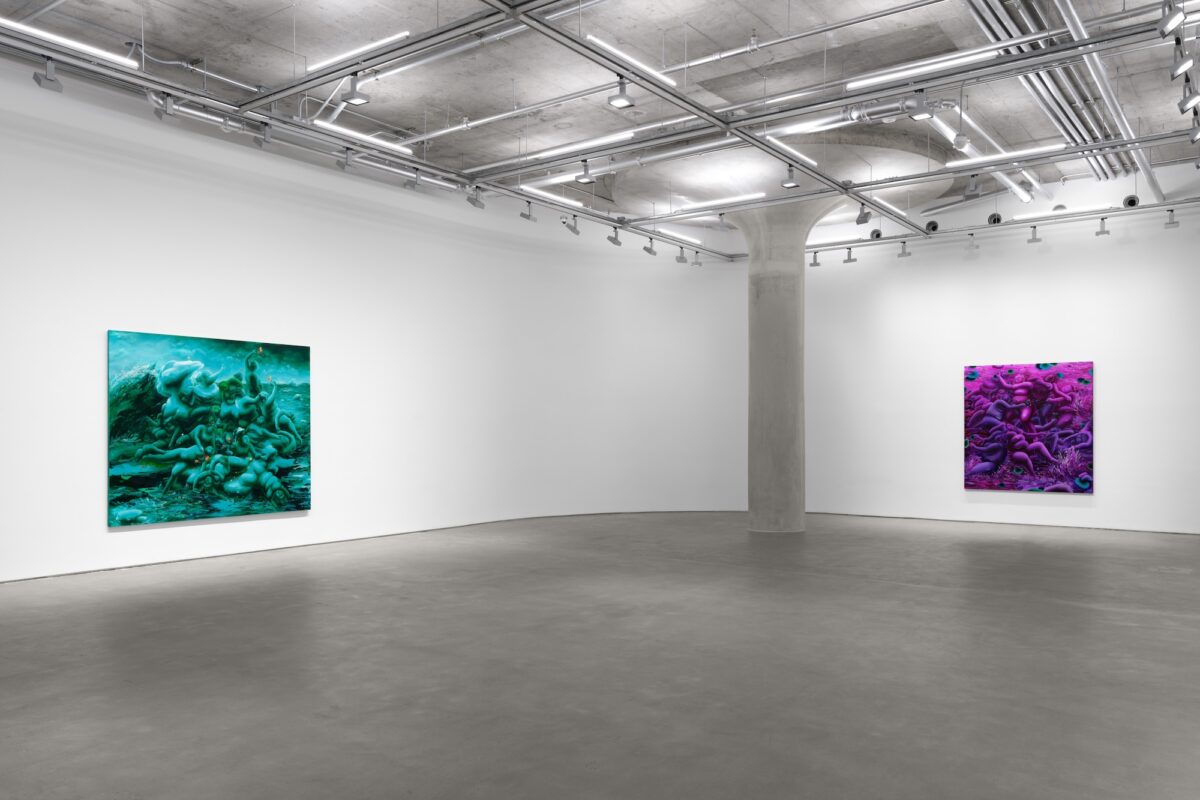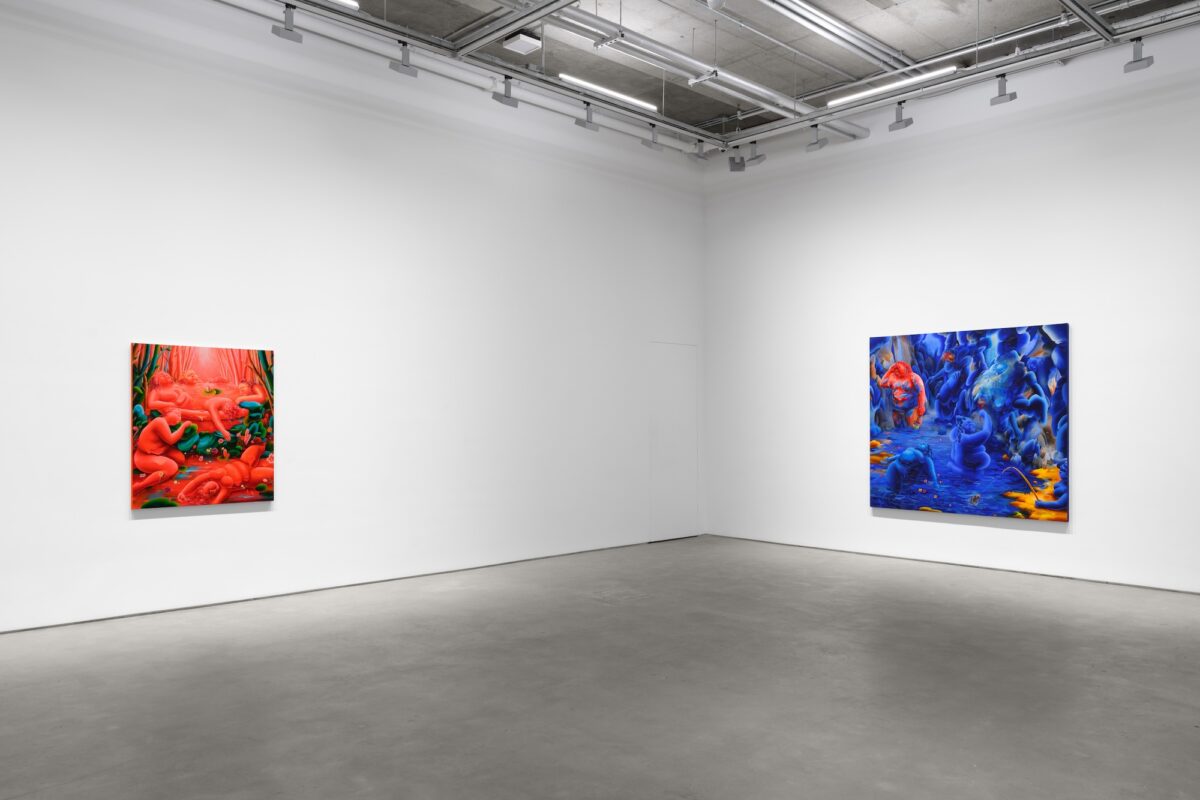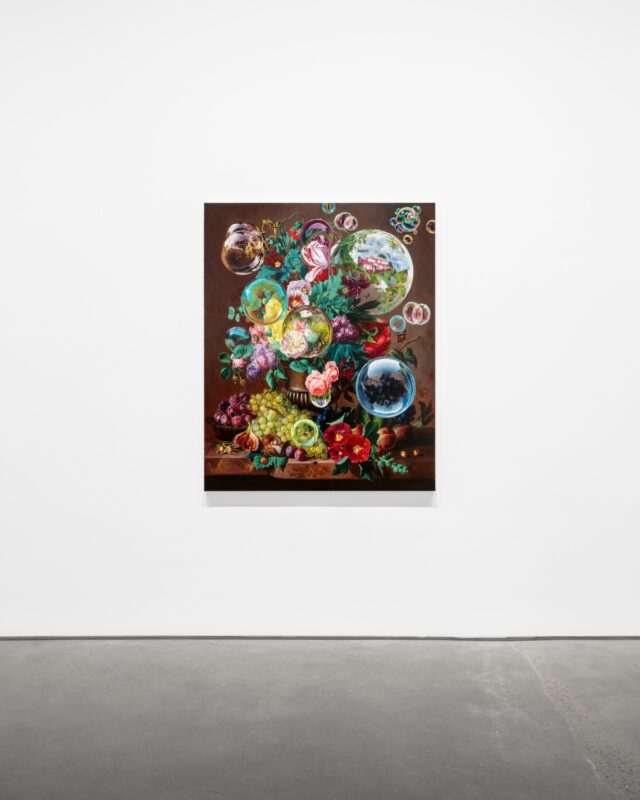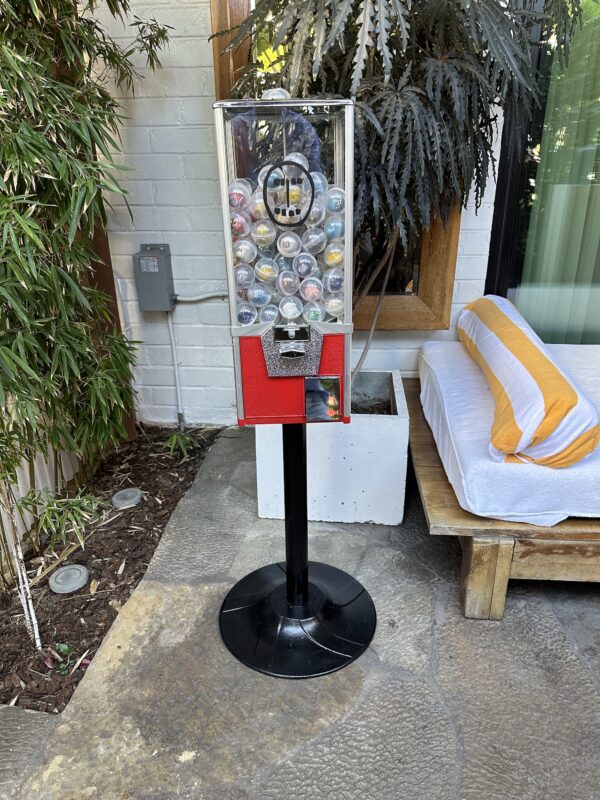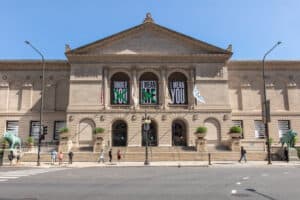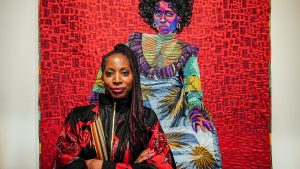Hyegyeong Choi is a painter who uses personal experiences and social observations from growing up in two diverse cultures as an entry point to creating lavish landscapes with voluptuous figures. These figures thrive in their environments which act as a metaphor to living freely without constraints, without external concerns.
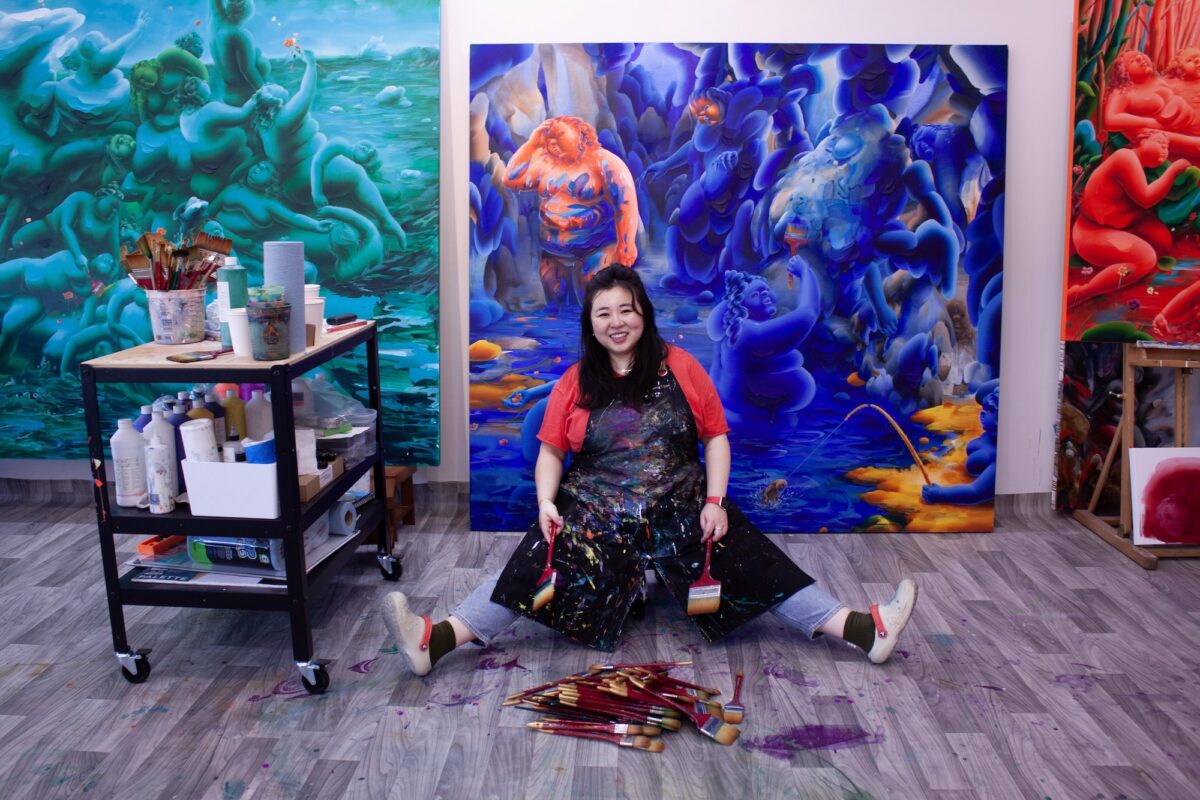
The New York-based, South Korean artist carefully applies acrylic paint using brush and palette knife with extreme rigor and intention to create densely layered narratives that employ the positioning of classic art historical nudes, ancient myths, and their characters. She adds a third dimension to many of her paintings with a proprietary form of colored foam, which took years to perfect. The vibrant, sometimes neon, pigments that cake the surface of the paintings are primal and welcoming.
Upon deeper investigation within the paintings viewers see that Choi brings human desires and vulnerability to the forefront of the canvas and conveys the shamelessly indulgent bacchanals ingrained within both American and Korean culture. These fantastical scenes are highly representational of the wishes and reverie that viewers can connect with.
Choi employs ample body imagery throughout. The empowerment of these often full, fleshy, and amorphous figures in a time when some societies are known to have an extremely high weight based bias, are defiant.. However, the figures that Choi creates are riddled with glee and gleaming with satisfaction as they recline and stroll through frosted scenes of unadulterated bliss.
Choi received a BFA from Chung Ang University, Seoul, and an MFA from the Art Institute of Chicago. Her work has been exhibited at Carl Kostyál, London; Harper’s, Los Angeles; Shelter Gallery, New York; Slow Gallery, Chicago; Pond Society, Shanghai; Micki Meng/Parker Gallery, New York; National Arts Club, New York; Deitch Gallery, Los Angeles; Carl Kostyál, Milan; Christie’s, New York; Another Gallery, Paris; Harper’s, Los Angeles and East Hampton; and Anton Kern, New York.
Choi’s solo exhibition at Harper’s, New York, Quieter and Colder, opened on May 10th and runs through June 15th, 2024. This is her first solo exhibition with the gallery.
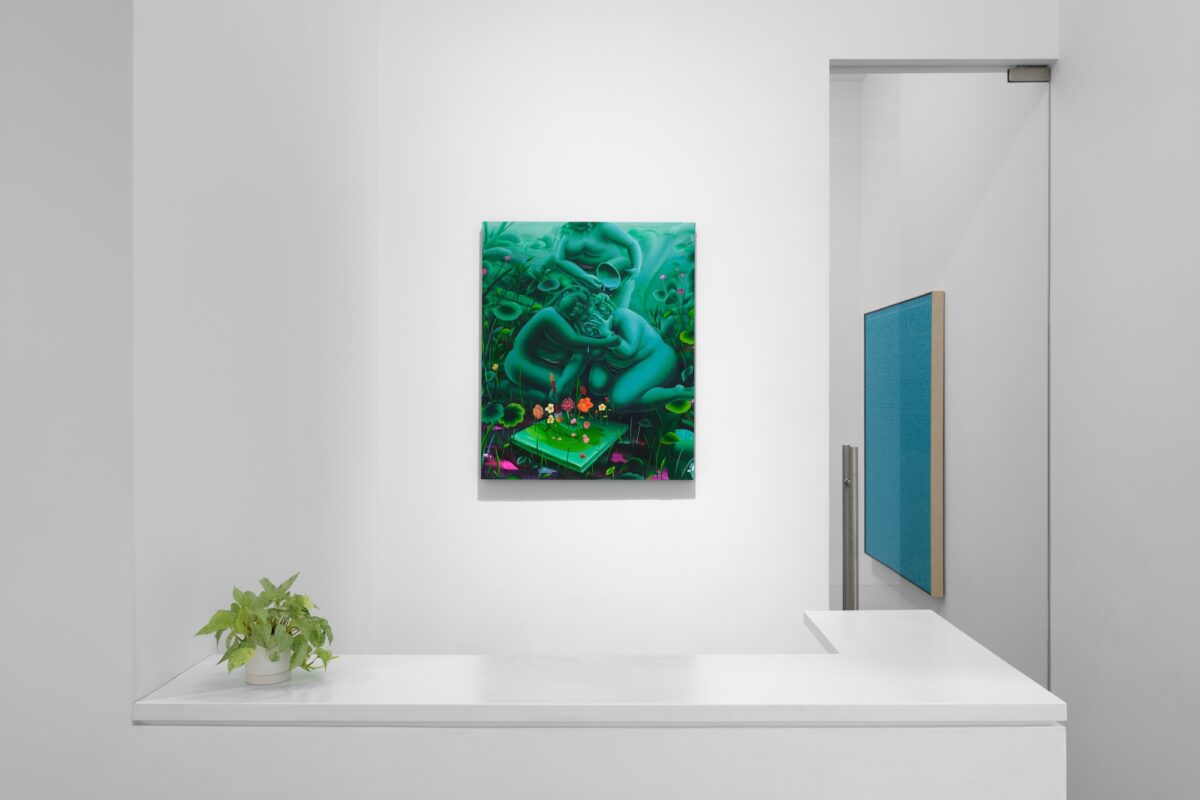
Can you describe these worlds that you’re building in this new series of work for your exhibition at Harper’s?
When I started thinking about ideas for the show, I immediately reminded myself how much I’ve been wanting to talk about what water means to me and to build a body of work for it. Within every painting in the show and many of my previous works, I have often portrayed figures and narratives that include water. To me, water represents healing, vulnerability, fear, stillness, quietness and, ultimately, life itself. In many religions and cultures water represents rebirth and for me, too, it became a symbol of a new beginning after I was saved from an attempt to drown away my internal turmoil when I was 19 years-old.
Your paintings transport viewers from their surroundings into extravagant landscapes which are full with an abundance of substances and lush with life. What do you accomplish by placing your figures in natural settings rather than domestic interiors?
I think that our interactions with nature capture human emotions best and this reminds people that we can be connected beyond something other than ourselves. Nature also represents the essence of life in the most beautiful way. It inspires my creative process. Because this show represents personal experiences of agony, sorrow, happiness, shame, etc., I thought that placing figures in nature would not only be an open invitation for people to connect but also make more sense with the overall theme of the work which is water. The spaces that I create in my works are important backdrops for the figures because they are a reflection of what I imagine are the perceptions of my body which may or may not be reflections of real life. As one of the narrative devices in my works, the natural setting for my compositions also plays a role between reality and ideality. To that point, nature inspires me to create fantastical spaces that emulate the wonders of nature in reality as well as my own mind.
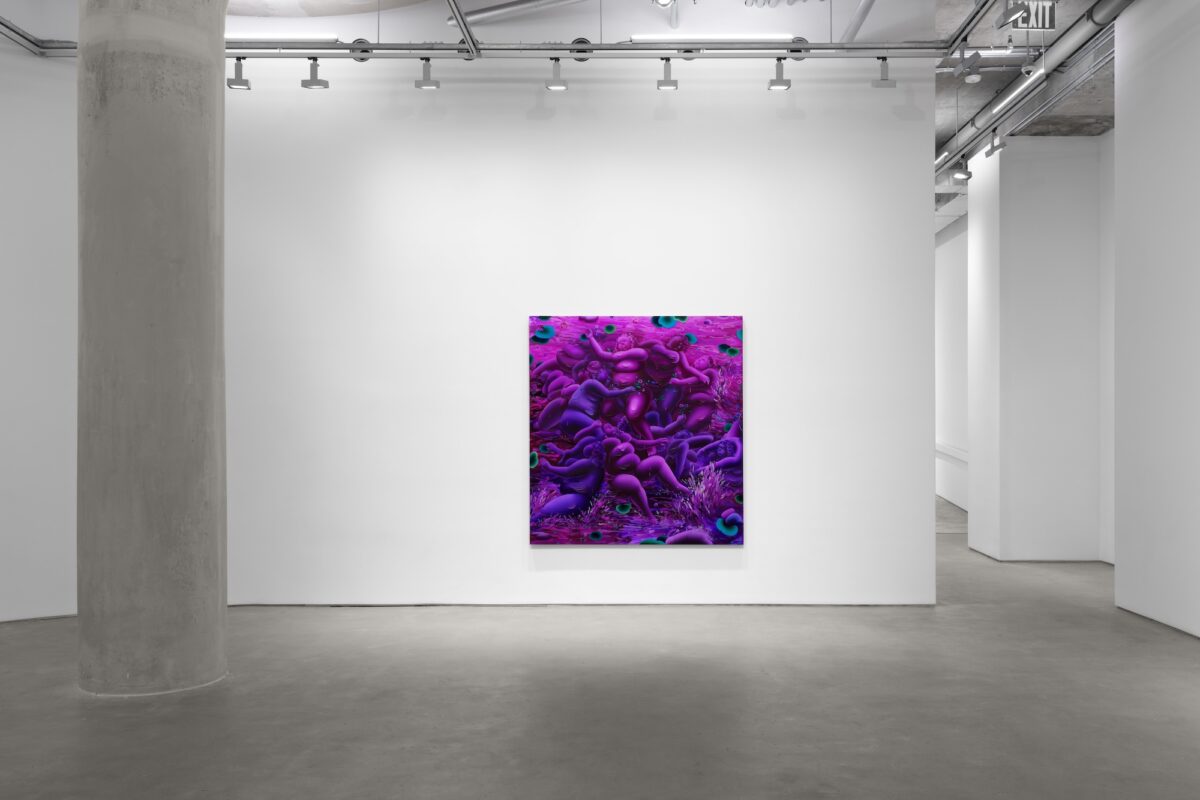
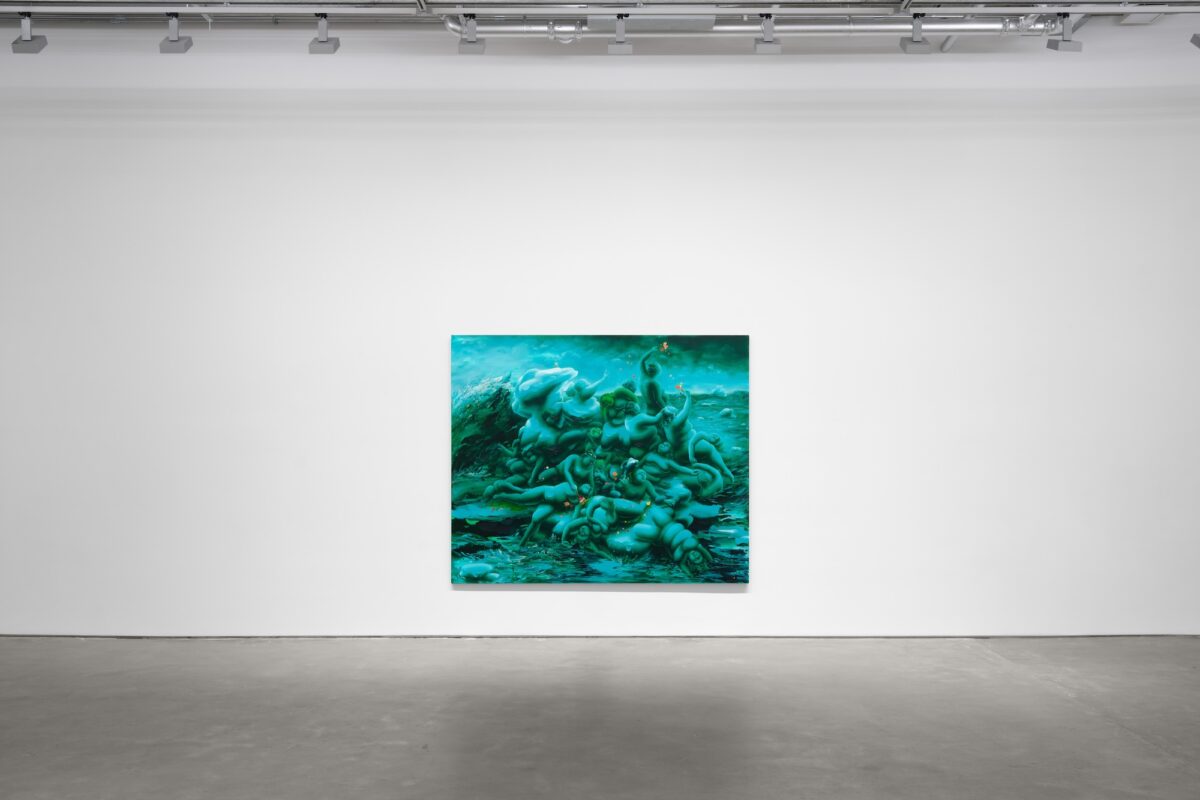
I’m semi-insatiable so I really appreciate the content of your paintings. What would you speculate is a binding trait that those who connect and seek out your artwork have in common?
I like to talk about desires and fantasized worlds in my work, as much as I like to talk about absurd and destructive behaviors that deliver shame, embarrassment and anxiety over body image. I think the exaggerated and overloaded images stem from a universal experience of desire and guilt that viewers can relate to and draw satisfaction from. The melting figures look like frosted cake, candy colors, food and so many other indulgent and consumable objects that I represent literally throughout my work.
Your figures are empty vessels for self-reflection. However, they have distinct facial expressions, hold stances of power or fragility, and occupy a “space” of action. Do you foresee a future where you further embed your figures with histories, relationships, and destinies? Some of your paintings nod to other artworks celebrated within art history such as your Ophelia and Venus. Are there other stories that play beneath the surface which you are attempting to impart on viewers?
The facial expressions can mean different things based on where and how the figures are portrayed in my paintings. For example, when the voyeur figures emerge in my paintings, they are often curious but distant from others and most are the true self-portraits in my works. On the other hand, some of the other figures present anxiety and emptiness on their faces, so it depends on what paintings I’m working on and what the painting requires figures to perform.
After making multiple paintings that were inspired by Ophelia by John Waters, I realized that I often painted drowned women. Then, I questioned why this recurring theme? . It was from my personal experience that I mentioned earlier when I was younger, and it made me think of the intense and desperate emotions that people feel when they are at the bottom of life. Because it was such an indelible experience in my life, I feel that I need to paint it again and again. When I was contemplating the relationship between this experience and my work, the ideas came together for this show and I titled it as Quieter and Colder after a line from a poem by Elinor Morton that I read while researching Ophelia.
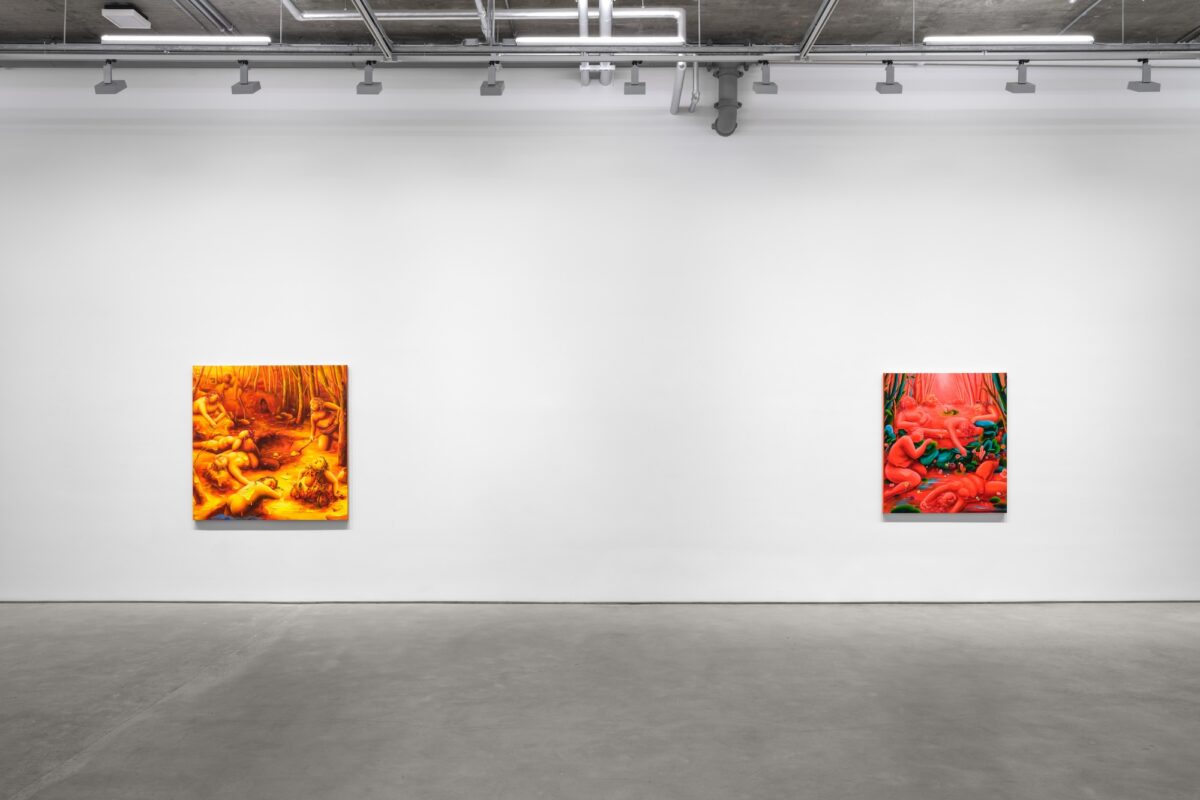
Your use of impasto, chiaroscuro, emotional expressiveness, glorious light, dramatic poses and gestures as well as narrative compositions, is a nod to your admiration for 19th-century European paintings. By utilizing these tools, do you believe you are better able to communicate both narratives and themes to viewers across cultures and generations?
When my paintings are created on a bigger canvas, I am stating the importance of a theatrical sense to my work. By creating sculptural textures of skin or flesh in my figures, I exaggerate the abundance, desire and intentions to incite the viewers to physically engage with the paintings. The oversized or life-sized figures don’t only escalate the experience of physicality but also let the painting extend into the real space of personal imaginations. Moreover, the works are related to French romanticism which are expressed through dramatic use of color, light, movement, capturing violence and nudity. Landscape is also one of the essential elements in the paintings as is the theatrical effect.
It was one of the most memorable experiences when I encountered the painting Raft of Medusa by Theodore Gericault (1791-1824) at the Louvre last year in Paris. I was struck by this painting because I have been admiring this painting along with many other French romanticism paintings from afar. I was inspired by the work and decided to reference it to recreate my own. As I mentioned earlier, I treated water as a place for a new beginning and rebirth within the chaos of life. The work that I created for the show is much more focused on the meaning of things such as what the flowers’ roles are in paintings from the past to now. Flowers can represent a multitude of emotions and feelings; love, passion, desire for purity, innocence and death.
I alternated the true tragic story into the environment where I imagine an apocalypse with an iceberg scene which also reflects on the world suffering from global warming now. Although it’s an imagined space, “Uncharted Water”, still represents the reality of what I’m concerned or suffering from now. Instead of directly bringing in the raft scene, I wanted to metaphorically transfer a similar tragedy into the world of my painting. The survival of the people in the scene expresses the urgency of the narrative from the original work. To create work like this, I had to be brave enough to initiate the work. However, I had a strong vision about how to execute this painting with more tender, hopefulness and less realism. I hope to deliver a different perspective but similar emotion because the main story with scenes of destructive, violent, overwhelming pain and struggles all remains in the painting.
I appreciate that figures in your paintings interact and support each other in numerous tasks. How do your adolescent years, adult experiences, and overall interests enable you to celebrate, practice or facilitate your knowledge in finding ways to represent community and identities?
I grew up in Korea and graduated from a college in Korea. I decided to go to a graduate school for paintings when I was finishing an ESL program in New York. I had no idea what it is like to be an immigrant and belong to society here until I had to deal with acquiring an artist visa and lived here for a while. Because people live in one kind which is mostly just Koreans in Korea. I wasn’t aware of racism much nor did I experience it. When I experienced the difference in race, discrimination and culture, I was desperate to find a community that I felt comfortable with. I was homesick for a long time although I hadn’t spent too much time with family and friends in Korea because of the complexity of my personality. I was already living alone from high school unlike other Korean people who live with family until they get married. I met my current friends in New York through the Here and There annual event in 2021. (Here and There Collective is a nonprofit artistic program that is created for gathering and supporting Asian-diasporic artists in the U.S.). After the pandemic, those of us who connected with each other on Instagram, could meet in person and slowly became friends over the years. Because we had so much in common based on how we grew up, what we do, and what we like to do, I see it as one of the best things that happened in my life when I met these people. We became like a family. We celebrate with each other. We understand what we make and what we do.
To demonstrate the importance of these friendships, I made a painting about the relationship between myself and Sarah Han, who is the director from Harper’s gallery and my liaison. “Han”, the painting is not only representing the friendship between us but also it is about how our friends support and understand each other. Bringing food for friends who are reaching the deadline for shows, waiting to contact the friends until they finish the shows and showing up at their openings no matter what, is much like how I got love from family and friends in Korea. I feel very lucky to be friends with these beautiful people and love how talented these friends are.
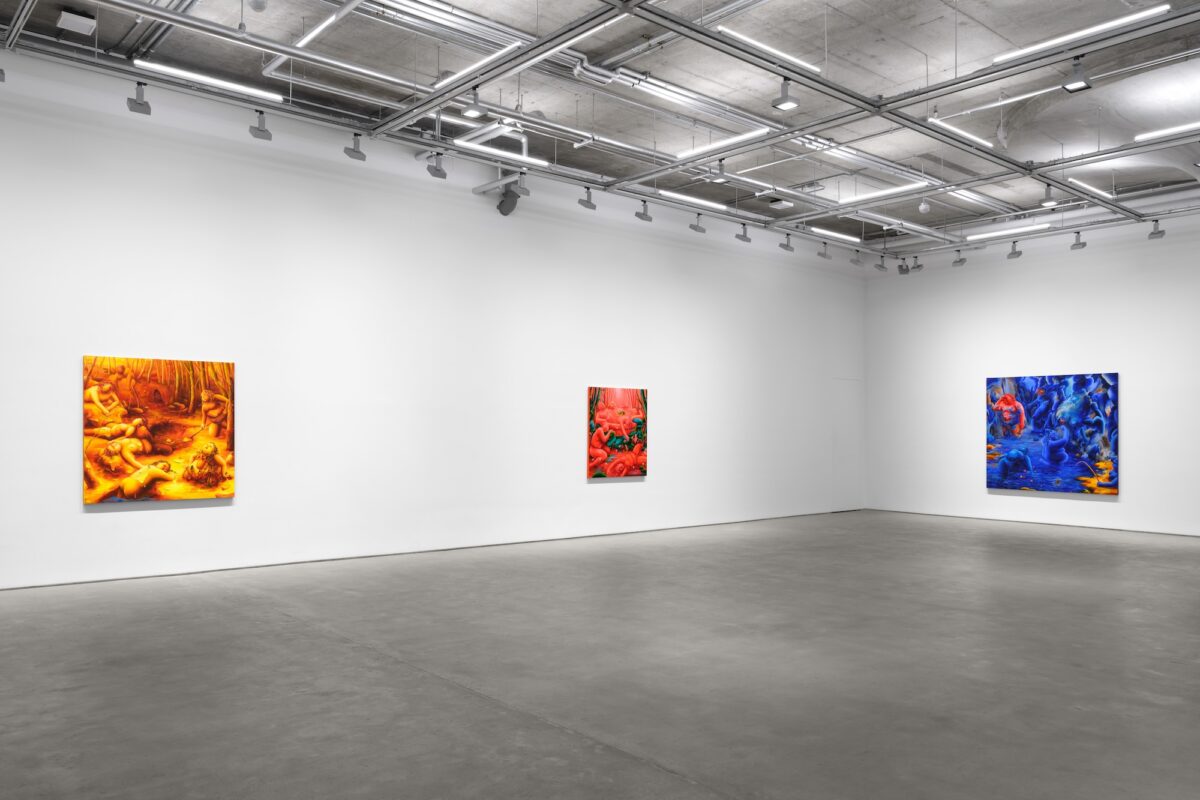
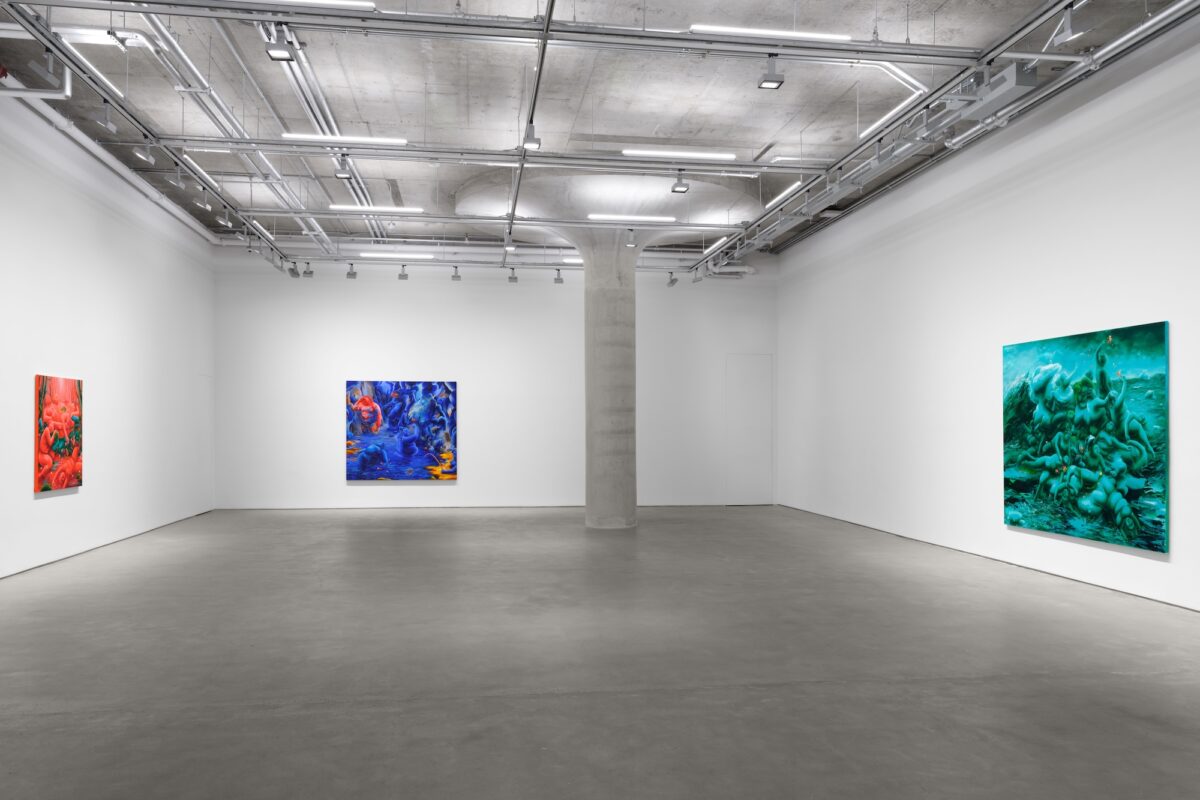
How do you navigate the risk of misinterpretation when twisting personal pain into comedic imagery, and what do you hope viewers take away from your work?
That’s a good question, I never actually worried about misinterpretation of my intentions by viewers. If people don’t understand what it means, I think that it’s just the way that they need or how they want to read the work. A lot of parts in my paintings don’t make sense and I often intentionally make the works nonsensical. It is to express mixed feelings and confusions of all of the things in my head. I want viewers to experience the work in their own way. If the works are cute to them, maybe it’s simply what they like to see from my works. If people only see the grotesque part in my paintings, they may relate to the self-destructive without seeing the jokes and wit. Bellies turning into a table for food, for instance, can be a struggle for somebody with an uncomfortable body part to experience, however, it can also be viewed with humor, as a kind of funny image that transforms a belly into something that looks like tutu for ballet on a figure dancing. I make them dance so to show the opposing force to what makes it hard to move with a heavier body. There is another painting with a woman trying to tie the shoes, but she can’t reach them. I placed a donut next to the shoes and titled it Priorities. Which one is the figure reaching out to, the shoelace or the donut? I think that the titles also help people figure out what they should think of when they look at my paintings.
When I moved here for the first time, I learned that joking about body image isn’t a funny thing here. It. was never a funny thing for me to hear but I just got used to it. In Korea, people carelessly joke about other’s appearances, mentioning sizes of others, and judging over weight to this day and, of course, it used to be way worse. Because I grew up in an environment where I could almost never gain self-esteem over my body image, It took a while for me to gain enough confidence back to love myself even a little bit. Because I speak through vulnerability and insecurity in my work, I want viewers to feel how fragile humans can be when they look at the work.
How does your choice of palette convey the psychological complexities behind your work?
Complementary colors in my paintings are mostly from food and nature. I, sometimes, get inspired by fashion or dancers, too. It’s vibrant, artificial and celebratory because I intend to invite people’s attention to hide absurd things within the painting that they can only see when they spend more time with it. Colors like candy, can be like the sweets that we consume in real life. It’s toxic or may not be good for you but it gives you joy.
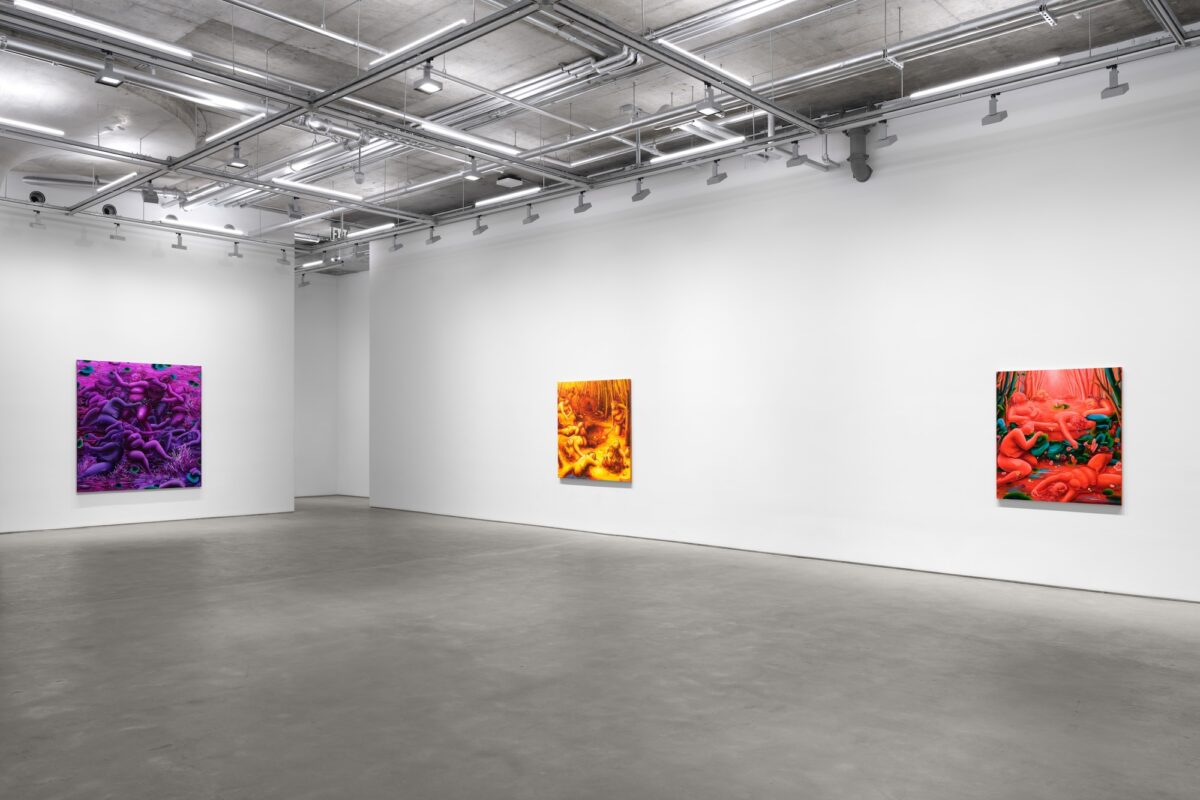
Could you talk a little about the importance of previous artworks and how you envision yourself developing off these ideas, motifs, scale, and/or imagery and what are some scenarios you have been fabricating that you would like to share? What is a future project you want to make happen?
In most of my works, I delve into personal and cultural themes related to the societal perception of body image, gluttony, and identity. My works often portray a complex interplay of self-destruction and desire, using symbolism like decapitation to create a simultaneous sense of allure and repulsion. Transforming anxieties and embarrassments into fantasized indulgence, excess and perverse is going to stay in my paintings for a while. It’s created in various iterations when I get inspired from different experiences that make me feel the same emotions. I’ve been wanting to extend my practice to highlight the physical experience with my paintings. I’m thinking of creating even bigger works with bigger figures and even sculpture in the future.
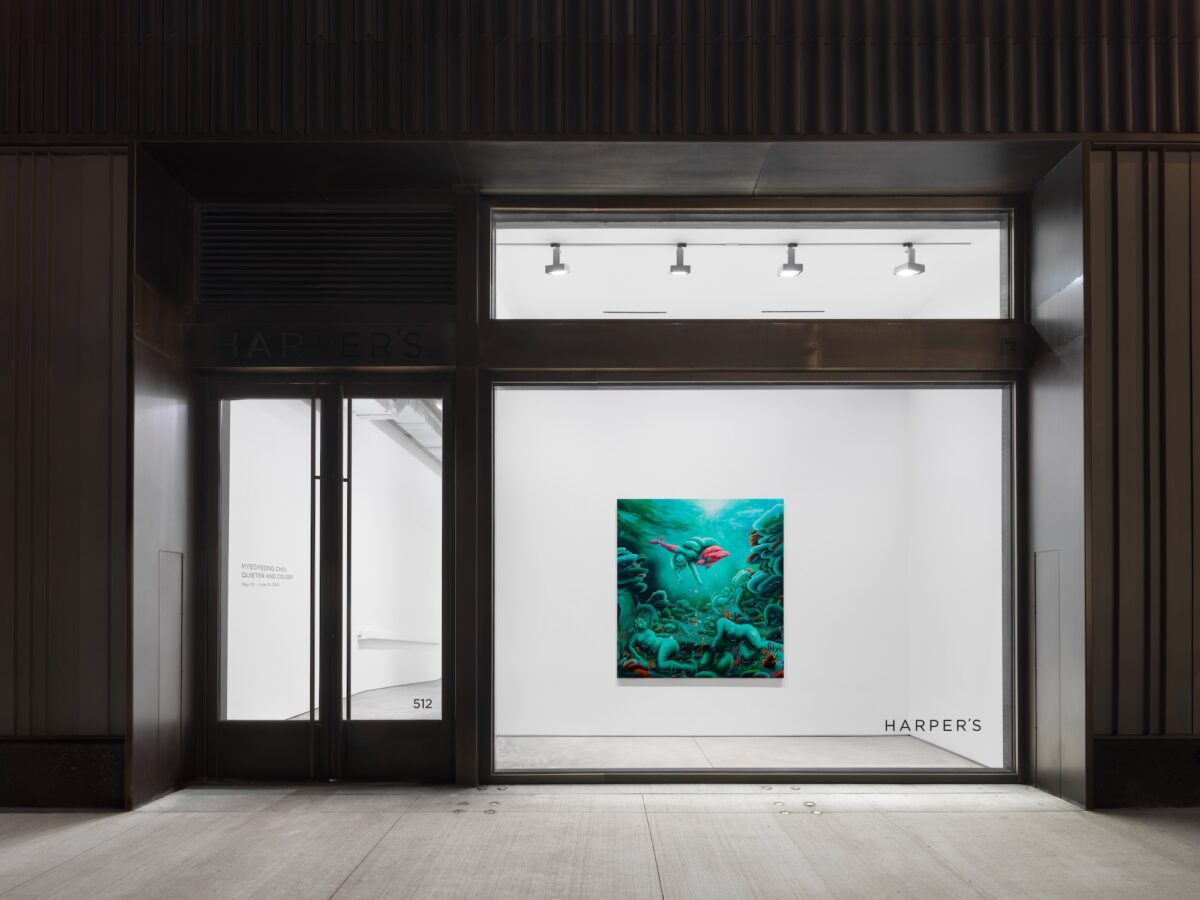
HyeGyeong Choi Quieter and Colder – through June 15th, 2024 at Harper’s, New York
To learn more about HyeGyeong Choi follow on Instagram at @hyegyeong_g_choi
